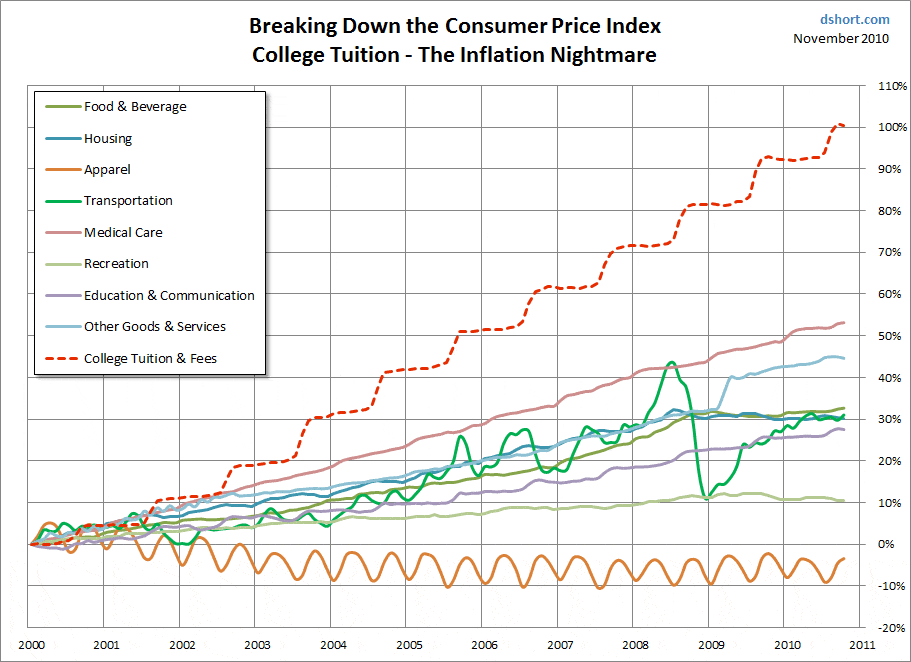Survey: Parental Anxiety Over College Tuition Decreases, But Student Loans Remain A Factor

Table of Contents
Decreasing Parental Anxiety: A Closer Look
While the fear of crippling college costs still exists, the overall level of parental anxiety over college tuition appears to be easing. Several factors contribute to this shift:
Factors Contributing to Reduced Anxiety
-
Increased awareness of financial aid options: The expansion of grants, scholarships, and need-based aid programs has made college more accessible to families from diverse socioeconomic backgrounds. Websites dedicated to scholarship searches, improved college financial aid websites, and increased outreach programs from educational institutions have all played a significant role in increasing awareness and access. Parents are better informed about the options available to them, reducing feelings of helplessness.
-
Improved college savings strategies: The rise in popularity of 529 plans and other tax-advantaged college savings vehicles allows parents to proactively save for their children's education. These plans offer significant tax benefits, making saving more attractive and achievable for many families. Furthermore, the availability of online tools and resources to track savings progress and project future costs has increased parental confidence in their ability to manage college expenses.
-
Shifting perspectives on the value of higher education: While the return on investment (ROI) of a college degree remains a concern, there's a growing understanding that higher education offers more than just financial benefits. Parents are increasingly recognizing the value of personal growth, skill development, and broader life opportunities that a college education provides. This shift in perspective lessens the pressure associated solely with the financial aspect of college.
-
More affordable online and community college options: The expansion of online learning and the availability of affordable community colleges offer alternative pathways to higher education, reducing the overall cost burden for many families. These options provide flexibility and affordability, making college more attainable for a wider range of students.
-
Increased transparency in college costs and financial aid packages: Many colleges and universities are now providing clearer and more accessible information regarding tuition costs and financial aid packages. This increased transparency enables parents to make informed decisions and better understand the true cost of attendance, reducing uncertainty and anxiety.
Geographic Variations in Anxiety Levels
Parental anxiety over college tuition isn't uniform across the country. Regional differences in tuition costs and access to financial aid significantly influence anxiety levels.
-
Analyze regional differences in tuition costs and access to financial aid: States with robust public university systems and generous state-funded scholarships often report lower levels of parental anxiety. Conversely, regions with limited financial aid resources and high private tuition costs experience higher anxiety.
-
Discuss the impact of state-funded scholarships and grants: State-funded programs play a vital role in alleviating the financial burden of college, directly impacting parental anxiety levels. States with generous scholarship and grant programs see lower levels of parental concern.
-
Higher anxiety in regions with limited financial aid resources: Areas lacking substantial financial aid options see parents struggling more with college affordability, leading to increased anxiety.
-
Lower anxiety in areas with strong public university systems: Regions with affordable and high-quality public universities often report lower levels of parental anxiety, as these institutions offer a more accessible and cost-effective path to higher education.
The Persistent Challenge of Student Loans
Despite the decrease in parental anxiety over college tuition, the persistent challenge of student loan debt remains a significant concern.
The Burden of Student Loan Debt
-
Discuss the rising national student loan debt and its implications for graduates: The soaring national student loan debt poses a significant threat to the financial well-being of graduates. Many young adults struggle to repay their loans, delaying major life milestones like homeownership and starting a family.
-
Explore the impact on long-term financial planning (house purchases, retirement): The weight of student loan debt can significantly impact long-term financial planning, delaying major financial goals like purchasing a home or saving for retirement. This financial strain can have lasting consequences on overall financial security.
-
Increased rates of loan default: The increasing rate of student loan defaults highlights the difficulty many graduates face in repaying their loans. Defaulting on student loans can severely damage credit scores and have long-term financial implications.
-
The mental health toll of student loan debt: The financial stress associated with student loan debt significantly impacts the mental health and overall well-being of borrowers. Anxiety, depression, and stress are common among those struggling with student loan repayment.
Strategies for Managing Student Loan Debt
Several strategies can help students and families manage the burden of student loan debt:
-
Explore different repayment plans (income-driven repayment, etc.): Income-driven repayment plans adjust monthly payments based on income, making repayment more manageable for borrowers.
-
Discuss the importance of financial literacy and budgeting for students: Financial literacy and effective budgeting are crucial in managing student loan debt. Understanding loan terms, interest rates, and repayment options is essential for responsible borrowing and repayment.
-
The benefits of loan consolidation and refinancing: Consolidating or refinancing student loans can simplify repayment by combining multiple loans into a single payment and potentially lowering interest rates.
-
The role of government programs in loan forgiveness: Government programs offering loan forgiveness or partial repayment assistance can provide crucial relief to borrowers in specific professions or with significant financial hardship.
The Future of College Affordability
To further reduce parental anxiety over college tuition and improve college affordability, several policy recommendations are crucial:
Policy Recommendations to Further Reduce Anxiety
-
Advocate for increased federal funding for need-based aid: Increasing federal funding for need-based aid programs would make college more accessible and affordable for low- and middle-income families.
-
Promote transparency in college pricing and financial aid packages: Continued efforts to improve the transparency of college pricing and financial aid packages are essential to empower families to make informed decisions.
-
Encourage innovative approaches to financing higher education: Exploring and implementing innovative financing models, such as income-share agreements, could reduce the reliance on traditional student loans and make college more accessible.
-
Support for affordable alternative education pathways: Investing in and supporting affordable alternative education pathways, such as vocational training programs and apprenticeships, would broaden access to education and skills development.
-
Investing in career services and job placement programs: Robust career services and job placement programs assist graduates in finding employment, ensuring the return on investment from their education.
Conclusion
While the survey indicates a decrease in parental anxiety over college tuition, the persistent challenge of student loan debt underscores the ongoing need for solutions to improve college affordability. Addressing the concerns surrounding student loans is crucial to ensuring a brighter financial future for students and families. By implementing policies that promote transparency, expand access to financial aid, and encourage responsible borrowing, we can continue to reduce parental anxiety over college tuition and create a more equitable higher education system. Learn more about strategies to mitigate parental anxiety over college tuition and discover resources to help manage student loan debt by visiting [link to relevant resource].

Featured Posts
-
 Anunoby Brilla Con 27 Puntos En Victoria De Knicks Sobre 76ers
May 17, 2025
Anunoby Brilla Con 27 Puntos En Victoria De Knicks Sobre 76ers
May 17, 2025 -
 Cumhurbaskani Erdogan In Birlesik Arap Emirlikleri Devlet Baskani Ile Telefon Konusmasi
May 17, 2025
Cumhurbaskani Erdogan In Birlesik Arap Emirlikleri Devlet Baskani Ile Telefon Konusmasi
May 17, 2025 -
 Cavaliers At Knicks Game Prediction And Betting Odds
May 17, 2025
Cavaliers At Knicks Game Prediction And Betting Odds
May 17, 2025 -
 Diddy Trial Cassie Venturas Testimony On Sean Combs Freak Offs
May 17, 2025
Diddy Trial Cassie Venturas Testimony On Sean Combs Freak Offs
May 17, 2025 -
 Eminem Eyes Wnba Ownership Latest Updates
May 17, 2025
Eminem Eyes Wnba Ownership Latest Updates
May 17, 2025
